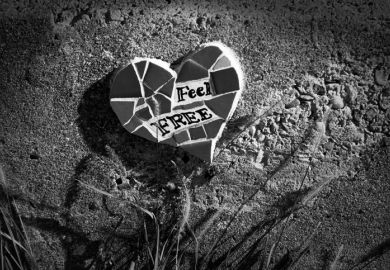Brendan O'Leary hails a definitive death-catalogue of the troubles.
Lost Lives is a comprehensive catalogue of the 3,636 human beings killed because of political violence in and emanating from Northern Ireland between 1966 and 1999 - a controversial starting point and an uncertain end point. Its authors, David McKittrick, Seamus Kelters, Brian Feeney and Chris Thornton, have performed a humane, moving, scholarly and unforgettable public service.
Their publishers likewise deserve credit; and the numerous publishers who turned the manuscript down because it was too long should hang their heads in shame, not least because it has been a success in sales, part of the pre-millennium Christmas purchases of the citizens of Ireland, north and south.
In 1,630 pages of double columns the authors record, in consecutive order of time of death, each person killed, their identity (including, if known, their nationality, religion of origin, family status, and occupation), the manner and location of their death, and the organisation responsible (if known), be it the IRA, the UDA (Ulster Defence Association) or the British army. They describe carefully and impartially any controversies over the death. The tone is one of quiet unexaggeration, matter of fact; only occasionally are doleful emotions displayed. The column entries also record subsequent court information where possible, though the names of convicted killers are rarely given unless very well known, ie notorious, but the authors almost invariably pin down the organisation. This is responsible authorship, designed to make more difficult the task of any bent on vengeance. The sources for each entry are not cited - that would have made the book twice as long - but are available from the authors. Given their reputations and careful cross-checking of one another's work, this text has full credibility and is the definitive book of the dead of the past 30 years.
I read all entries in order, resisting the temptation to look up the index to read about those whom I knew, had met or just knew of. I resisted fast-forwarding to the aggregate data gathered at the back where I would normally quench my professional thirsts. But I stopped at entry 1,130, and did not resume reading for three weeks.
Part of this entry reads: "May 21, 1974. Michael Joseph Mallon, South Belfast, civilian, Catholic, 20, student. The Queen's University student was travelling back to Belfast from his home at Toomebridge, Co. Antrim ... his body ... was discovered by a passing motorist between Shaw's Bridge and Barnett House (on the outskirts of Belfast) ... He had been shot four times in the head ... he was a friend of Monica McWilliams, later to become (a professor and) leader of the Women's Coalition ... In 1986 four men, two of whom had been living in Wales, were convicted in connection with the killing, two of them receiving life sentences. The court was told the victim had been beaten up in a UDA club ... before being taken to Shaw's Bridge and killed. A criminal injuries award of Pounds 1,582 to his parents was later cut to Pounds 82 to cover only funeral expenses. See also Joseph Mathews (857) and Anthony J. McDowell (826)."
Mickey Mallon went to the same school as me; four years my senior, we had often shared an eight-person dining table in the boarding section of an austere Catholic grammar school in the glens of Antrim. He was the first person whom I knew quite well to die in the conflict. We were not close - age differences matter more when one is young - but I was not alone in being shocked by his murder and the rumours that accompanied it: there were whispers he had been tortured before being shot. That May the power-sharing executive established at Sunningdale was destroyed - by difficulties between its nationalist and unionist coalition partners, continuing republican and loyalist violence, an "Ulster Workers Council" strike supported by unionists who said "No to Sunningdale" and by the pusillanimity of the then Labour government. As the power supplies dwindled and our reading lights dimmed, some of my peers were frightened that loyalist paramilitaries, or "Orangies", would shoot us in our beds - a fear strengthened by the school's appointing of guards and dogs to patrol the boundaries. Hearing of Mickey Mallon's fate, few of us trusted anyone - let alone the police, the army or the IRA - to protect us.
Mickey was one of our own, a success, someone who had gone to university (then a more demanding ambition and more worthy of commendation). He had been killed, not because of something aggressive he had done or said, but because for some UDA personnel any Catholic would do, regardless of his theological or political commitments. He died in a moment of extreme polarisation, in an act of "representative violence" or of "communal deterrence", as academics term these executions. He was tortured and shot, according to the rumours, after taking an apparently innocuous risk. We resolved never again to hitch-hike.
On resuming reading Lost Lives , I was again taken by surprise: the next two entries record the death of two middle-aged publicans, the Byrne brothers, killed in Tannaghmore, near Ballymena, in a rampaging assault by the local UDA and the UVF (Ulster Volunteer Force), intent on shutting all the "Catholic" pubs in the neighbourhood. This was strike enforcement, loyalist style. The brothers were shot in the course of defending their right to serve their customers. They were the relatives of another boy at my school. I was disturbed at my having forgotten that the two incidents of killing (Mallon and the Byrnes) occurred within days of each other. My reading also prompted a strange recollection: in some tabloid newspaper I had read that some Labour MPs thought the UWC strike an example of working-class power. I remember asking, why was that important? Were the Byrne brothers not working class?
These are just two subjective responses to the 3,636 entries in this book. Every death has its context, its memories, its intimacies, sometimes touching, sometimes vicious, sometimes heroic, sometimes cowardly and banal - as Lost Lives shows in its controlled and cumulative sequencing. Every death is also soon forgotten by most beyond the immediate circle of recollection, and even when registered its timing is washed away in the oblivion of acceptance and forgetting - as had happened with the entries that I personally know about, or am now prompted to remember.
Most Irish and British people, and some from outside these islands, who have been affected by the death of a relative or friend in the conflict, will read the entries they know, and related ones prompted by the authors' characteristic concluding line: a page reference to some other death. Others will keep Lost Lives as a monument: a gravestone, a word-tomb for the known dead. It will be one of the most fitting monuments for a conflict that, if reason again prevails, is in sight of its final moments. Lost Lives must also be mined by social scientists for years to come; a CD will accompany it in future, and may ease its manipulation for computer analyses. The data can be coded to test every intelligent model of the violence. Every university library should have a copy for its researchers and students examining ethno-national conflicts: its micro-record of each individual death is to my knowledge unique - perhaps paralleled only by Robert Clarke's work on the Basque conflict.
In aggregate, however, Lost Lives does not significantly differ from the broad analyses first sketched by Michael McKeown for the Irish Information Partnership, developed and used by John McGarry and myself, taken further by Malcolm Sutton, and recently supplemented by the Costs of the Troubles Group based at the University of Ulster. The biggest-picture analyses are "agents responsible" for deaths, and the "status of those killed".
McKittrick et al find republicans have been responsible for 58.8 per cent of all deaths; loyalists for 28.8 per cent; the official security forces for 10.1 per cent; and others/unknown for 2.2 per cent. By contrast, using Irish Information Partnership data in The Politics of Antagonism we found republicans responsible for 57.7 per cent of all deaths between 1969 and 1989; loyalists for 25.3 per cent; the security forces for 11.8 per cent; and others/unknown for 5.2 per cent. These differences are partly, of course, attributable to the different time periods examined. The major difference produced by McKittrick et al 's exhaustive research is that they have radically reduced the number of deaths attributed to unknown/other agents. That alone makes them the best researchers in this macabre field.
Read in context, their data confirm other big stories. If we take 1969 as year zero, the RUC and the army were responsible for ten of the 18 deaths (the RUC and its reserve being responsible for seven of the first eight); loyalists for three; and republicans for five. This is what counts in the republican memory.
In 1970, republicans went on the offensive, being responsible for 20 out of 28 deaths (including five "own goals"). By 1971, the conflict had escalated: 180 died, the policy of internment acting as a major catalyst of republican violence responsible for 107 of the death toll. The Provisional IRA had become the largest and most hard-hitting of the paramilitary organisations. This is what counts in the unionist memory.
And so on. Lack of space prevents me from demonstrating the insights reaped from this book, so I shall close with one figure: 321. In the years 1990-94, 436 people died as a direct consequence of the conflict; in 1995-99, there were 115 deaths (including those at Omagh). 436 minus 115 equals 321. This simple equation is a good guide to the number of lives saved because of the ceasefires, the peace process, and the political settlement of 1998.
This figure of 321 saved lives, as well as the figure of 3,636 dead and counting, should be put before the IRA, the UDA and the UVF as they refuse to decommission; before Peter Mandelson and his civil servants, whose suspension of the Northern Ireland Assembly (regarded as unconstitutional by many nationalists) threatens to unravel the achievements of the past five years; and before all constitutional politicians, British and Irish, nationalist, unionist, republican and loyalist. It is their joint duty to see that no more lives are lost.
Brendan O'Leary is professor of political science, London School of Economics.
Lost Lives: The Stories of the Men, Women and Children who Died as a Result of the Northern Ireland Troubles
Author - David McKittrick, Seamus Kelters, Brian Feeney and Chris Thornton
ISBN - 1 84018 2 X
Publisher - Mainstream
Price - £30.00
Pages - 1630
Register to continue
Why register?
- Registration is free and only takes a moment
- Once registered, you can read 3 articles a month
- Sign up for our newsletter
Subscribe
Or subscribe for unlimited access to:
- Unlimited access to news, views, insights & reviews
- Digital editions
- Digital access to THE’s university and college rankings analysis
Already registered or a current subscriber? Login



